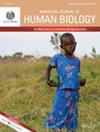Time Trends in Adult Height Among Russian Males and Females (1966–2000) and Projections to 2050 in the Context of Changing Living Conditions
Abstract
Objectives
To model the temporal dynamics of adult height among Russian males and females born between 1966 and 2000, in relation to changes in socio-economic and demographic indicators reflecting population living conditions.
Methods
The study is based on publicly available anthropometric, socio-economic, and demographic data. Time trends in adult height were examined using mean values recorded at age 19 for males and females born between 1966 and 2000. Eleven proxy variables representing environmental conditions (e.g., nutrition, health, and urbanization) were analyzed across the study period. Statistical methods included correlation analysis and multiple linear regression to identify key predictors of cohort-level height variation.
Results
From 1966 to 2000, adult height increased steadily up to the cohorts born in the late 1980s, declined in the 1990s, and rose again in the early 2000s. Regression models identified five key predictors most strongly associated with height trends: the share of urban population, life expectancy at birth, crude birth and death rates, and per capita meat consumption. A preliminary projection based on these models suggests a continued increase in average adult height for cohorts born through 2050.
Conclusion
This study introduces original theoretical models that link time trends in adult height in Russia to long-term changes in environmental conditions shaped by major historical events in the latter half of the 20th century. The findings highlight the substantial impact of urbanization, nutritional status, and population health on physical growth outcomes. For the first time, these regression-based models have been used to generate a projection of adult height trends in the Russian population through 2050. The proposed framework offers valuable insight into the biological consequences of socio-economic transformation and provides a basis for future research and public policy aimed at supporting child development and improving population health.

 求助内容:
求助内容: 应助结果提醒方式:
应助结果提醒方式:


